Singapore
Singapore is super easy to discover on your own! From the ship it’s just a 5–6 minute walk to the subway station. The MRT is really cheap and takes you everywhere.
A few fun facts about the country: chewing gum is banned in Singapore – yes, really! It’s part of the city’s cleanliness policy. You’ll immediately notice how clean and well-organized everything is.
My personal highlight is Gardens by the Bay. The giant glowing “Supertrees” are an absolute eye-catcher – especially in the evening during the free light show, usually around 5:45 and 6:45 pm. Simply magical! During the day, you can also check out the two big greenhouses – they’re stunning, with huge plants and fascinating installations. Last year there was even a cool Avatar edition where the trees lit up when you touched them.
In the evening, I also recommend Marina Bay Sands. There’s a rooftop club with a breathtaking view of the city – a fantastic experience I shared with my parents. But: not for kids!
During the day, a walk around the Merlion Park is also worth it. The Merlion is the city’s symbol – a lion statue spouting water. The river and surrounding parks are perfect for strolling.
Currencies: Singapore Dollar (SGD), 1 € ≈ 1.51 SGD
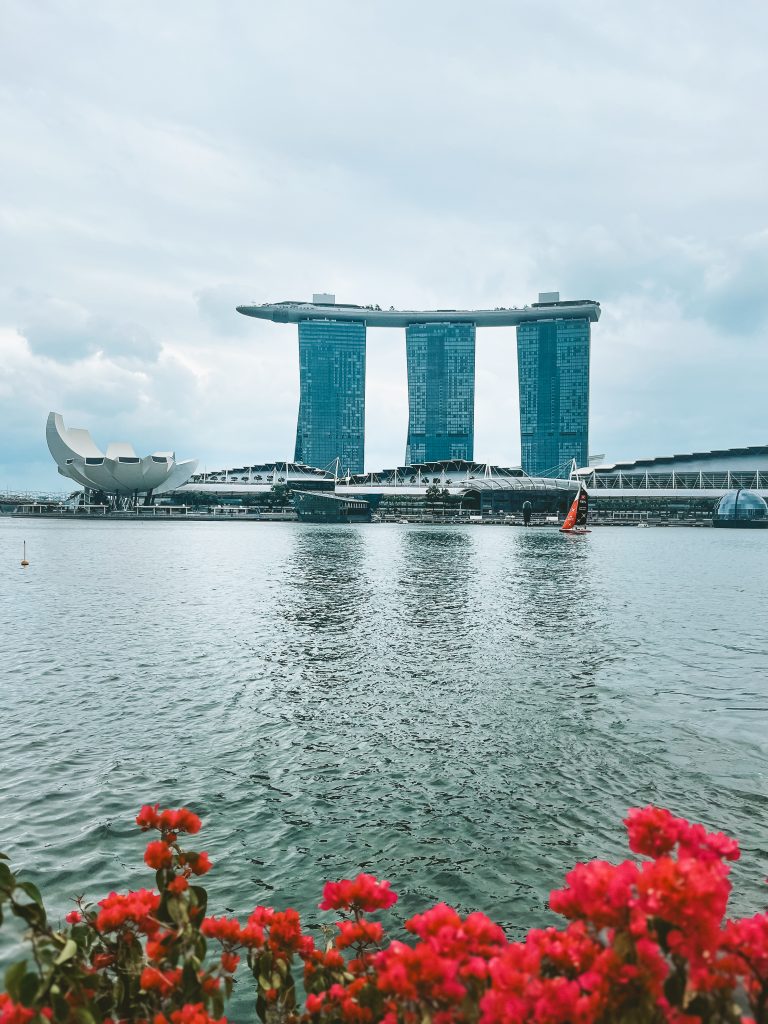
Marina Bay Sands
Marina Bay Sands is Singapore’s iconic waterfront hotel, famous for its striking architecture and infinity pool that seems to float above the city. By night, its lights mirror the vibrant skyline, making it a true city landmark.
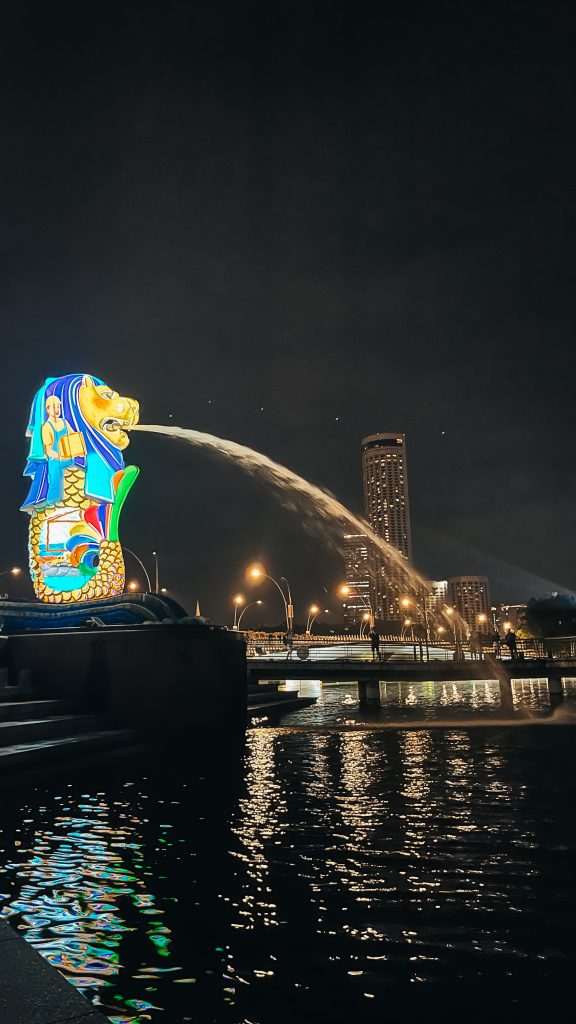
Lion Merlion
The iconic Merlion of Singapore comes alive at night, spouting water and changing colors in a mesmerizing display. The lights reflect the city’s vibrant energy, turning this symbol of Singapore into a dynamic spectacle after dark.
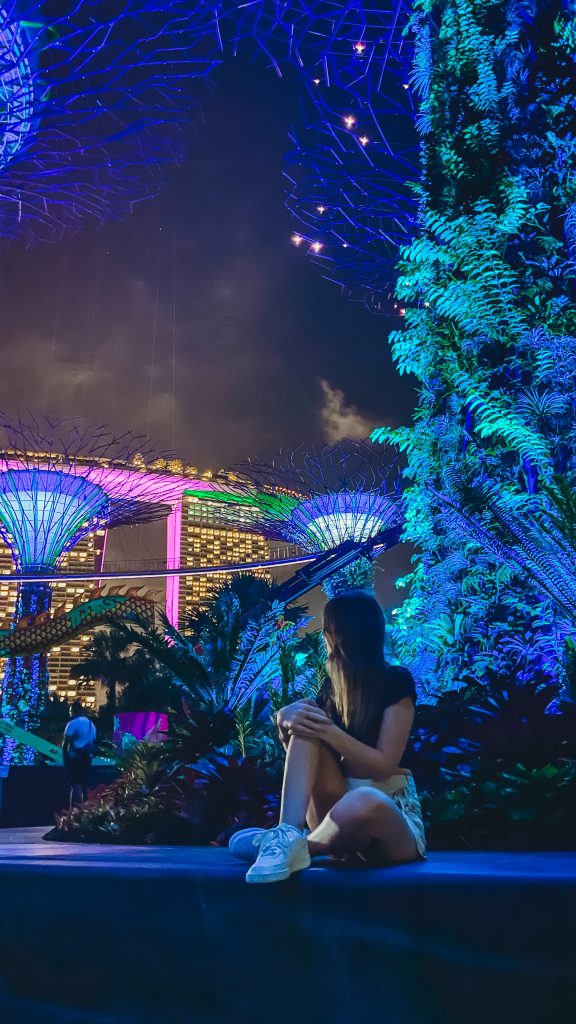
Gardens by the Bay
The Supertrees at Gardens by the Bay light up every evening in a stunning show of color and music. From 7:45 PM to 8:45 PM, these towering vertical gardens come alive, turning the night into a magical spectacle.
Kuala Lumpur
Two must-see highlights you can easily visit on your own in Kuala Lumpur:
• Batu Caves: An impressive temple complex inside a giant limestone cave, with colorful, massive stairways. Remember to wear long clothes (shoulders and knees covered).
• Petronas Twin Towers: The iconic twin skyscrapers in the heart of the city. Best to go in the morning before it gets too crowded.
The practical part: taxis are waiting right outside the ship. You can just hop in and negotiate – drivers are used to bargaining, and it usually works well.
Currencies: Malaysian Ringgit (MYR), 1 € ≈ 4.95 MYR
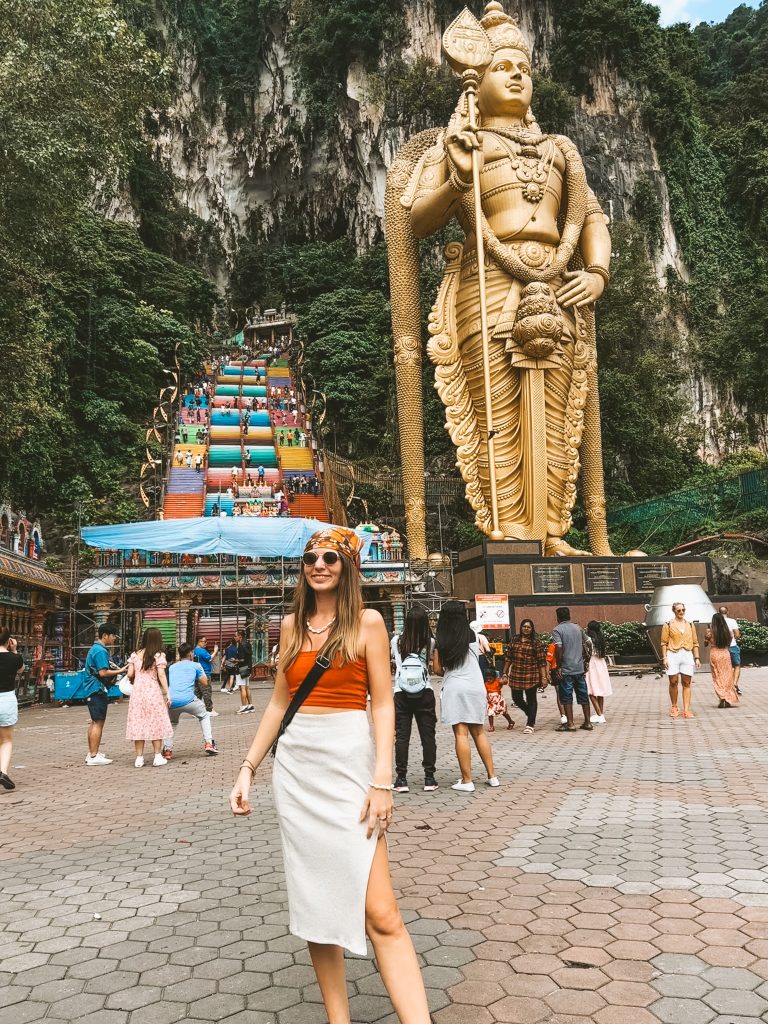
Batu Caves
Before reaching the Batu Caves, watch out for the cheeky monkeys along the way! Don’t rush—take your time climbing the 272 steps to fully enjoy the vibrant colors, impressive limestone caves, and the magnificent golden statue of Lord Murugan..
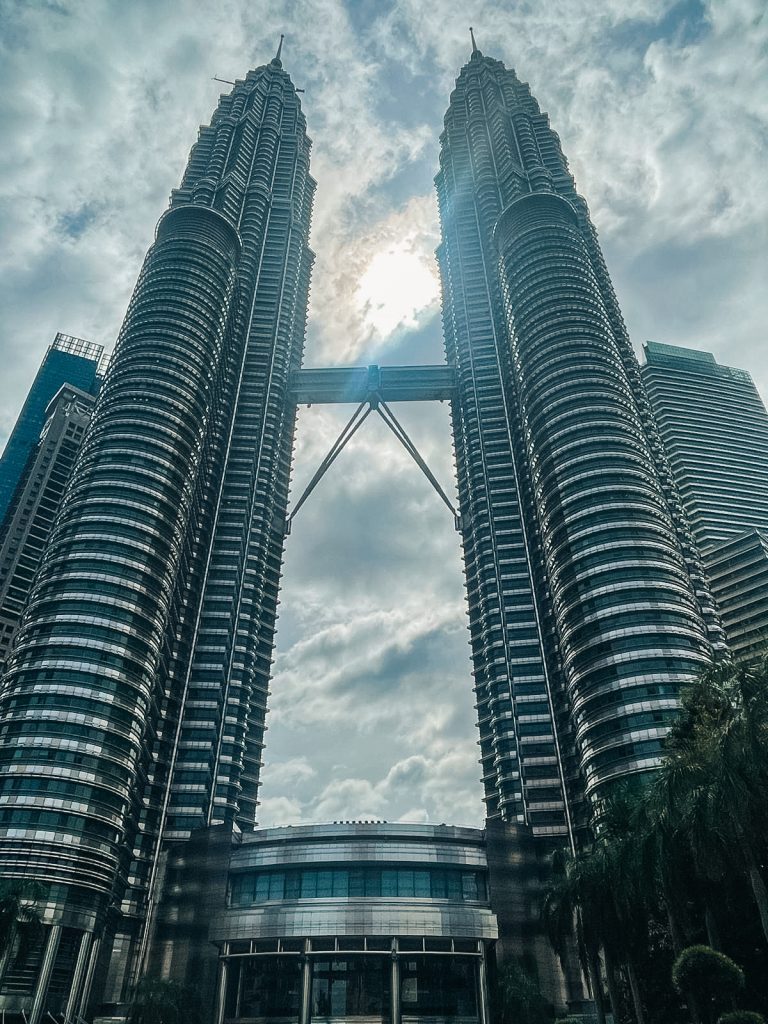
Petronas Towers
The Petronas Towers in Kuala Lumpur dominate the skyline with their twin spires and sleek design. At night, they shimmer with lights, reflecting the city’s modern energy and becoming a symbol of Malaysia’s progress.
Langkawi
Langkawi is all about nature. One of the big attractions is the Skywalk – a treetop path with a glass floor. You’re basically walking in the air above the jungle with amazing views. It’s very popular, though I didn’t try it myself.
Another great option is a boat tour through the mangroves. You’ll visit bat caves and spot monkeys in the wild. It’s best to book in advance, and many tours even offer direct pickup from your ship for extra convenience. Super easy and stress-free!
Of course, Langkawi’s dreamy beaches are also perfect for relaxing.
Currencies: Malaysian Ringgit (MYR), 1 € ≈ 4.95 MYR
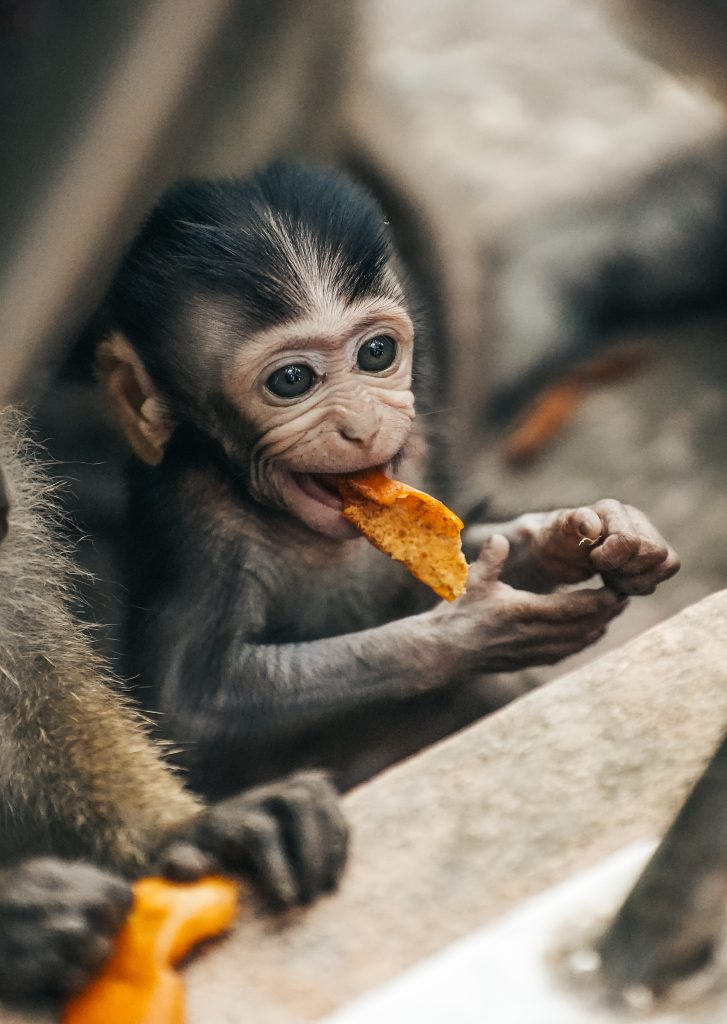
Bat cave
The bat cave in Langkawi is reached by a scenic boat ride, but watch out for the playful monkeys along the way—they love to be fed! You can buy food on site and enjoy interacting with these cheeky locals before exploring the impressive cave filled with bats.
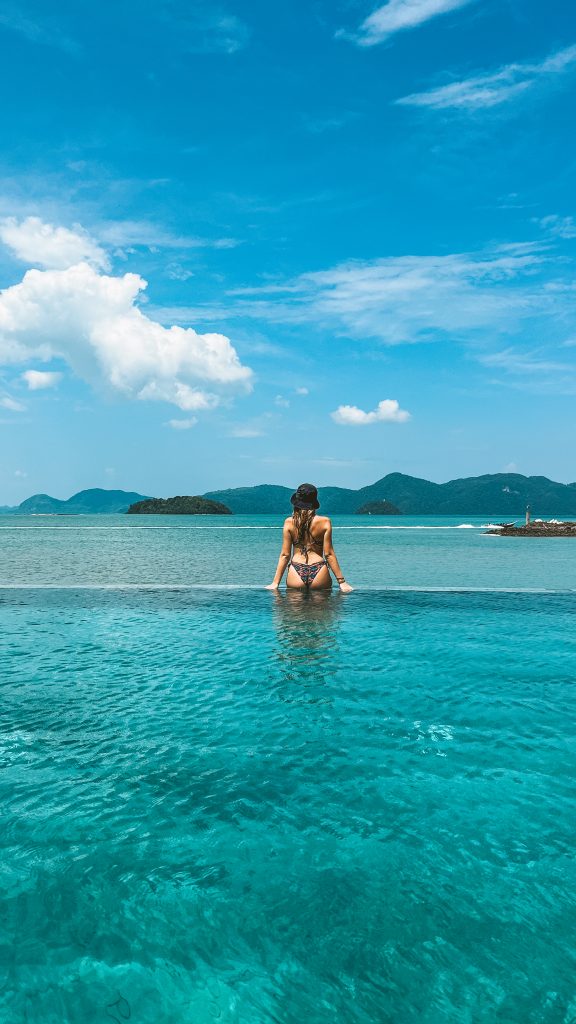
Langkawi’s harbor
Langkawi’s harbor is small but charming, offering a cozy vibe and even a little pool to relax by. It’s the perfect spot to soak in the laid-back island atmosphere before setting off on your adventures.
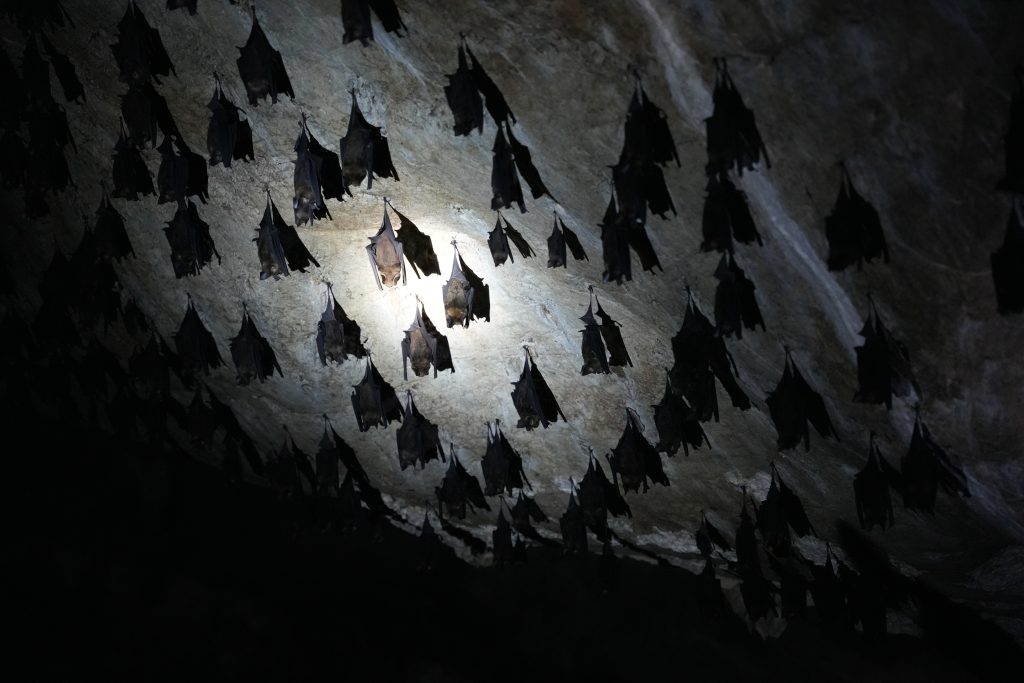
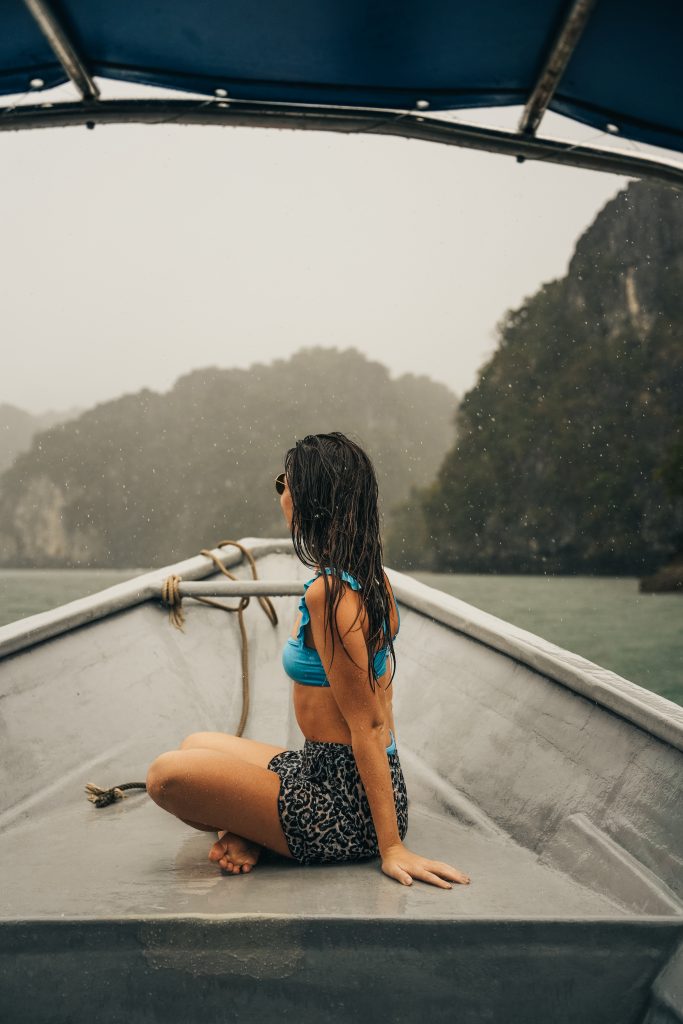
boat tour through mangroves
This Langkawi boat tour glides through lush mangroves to the bat cave. Playful monkeys greet you along the way, and you can buy food on site. Tours are easily booked at the jetty.
Koh Samui
Koh Samui has so much to offer:
• Beaches: There are countless beautiful beaches. One of my favorites is Ark Bar Beach Club – super chill with a great vibe, perfect for relaxing.
• Temples: A must-see is Wat Phra Yai, also called the Big Buddha Temple. The views over the island are stunning. Usually, there’s a monk sitting at the stairs, blessing visitors and tying a lucky bracelet around your wrist. A wonderful experience – just give a small donation, that’s enough.
• Elephant Home: A very special highlight! I can highly recommend Elephant Home on Koh Samui. Unlike some places where elephants aren’t treated well, here you can safely feed and interact with rescued elephants in a caring environment.
My recommendation: On Koh Samui, I recommend renting a scooter or taking a taxi to explore the island. There are many unique temples to discover, each with its own charm, and the Fisherman’s Market is definitely worth a visit.
Tip: Koh Samui is a tender port, so try to get up early to catch one of the first slots to go ashore.
Currencies: Thai Baht (THB), 1 € ≈ 37.58 THB
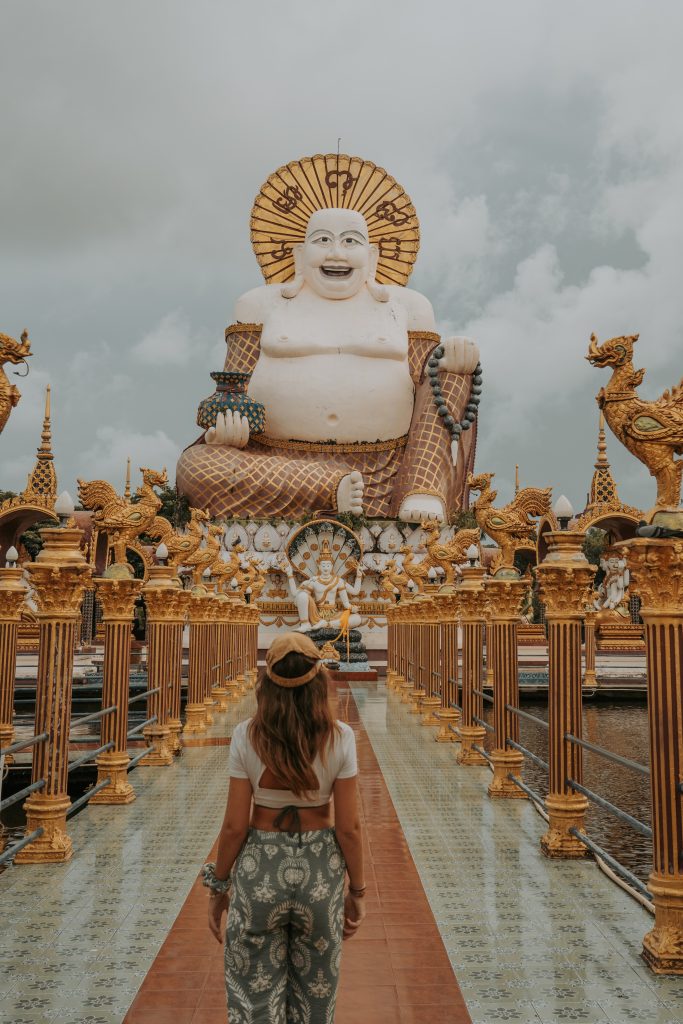
Temple
Koh Samui’s temples showcase stunning architecture and offer a peaceful glimpse into Thai culture and spirituality.
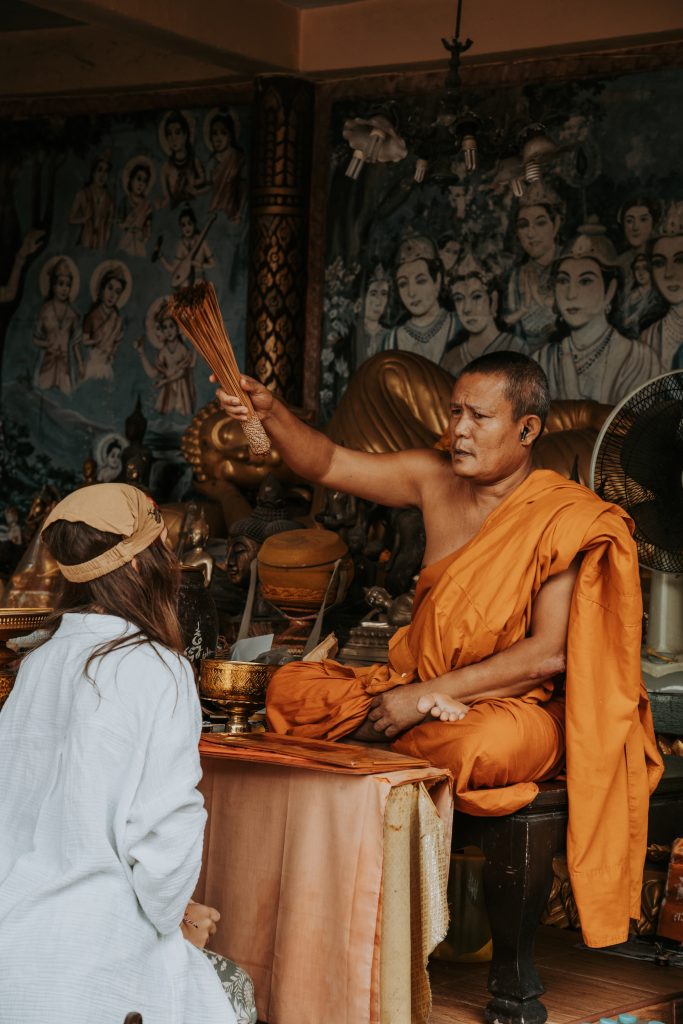
Wat Phra Yai
At Wat Phra Yai, home to the giant Buddha of Koh Samui, I had the incredible experience of being blessed by a monk.
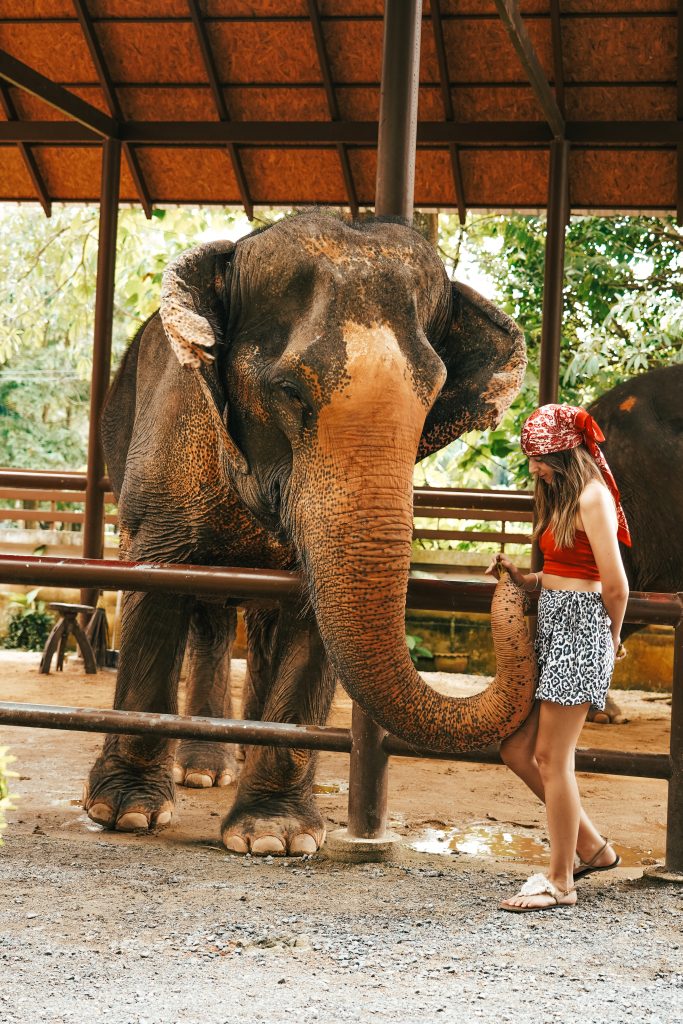
Elephant Home
At Elephant Home on Koh Samui, you can feed and interact with elephants who have been rescued from difficult situations. It’s a heartwarming experience, giving these gentle giants a chance to thrive in a safe and caring environment.
Laem Chabang / Bangkok
The port of Laem Chabang is about 2 hours away from Bangkok. If you have time, it’s definitely worth heading into the city – either by taxi or on an organized excursion.
Bangkok is another world – the Grand Palace is huge and stunning, and the Floating Market is very exciting. Don’t try to go to the market alone by taxi, though – it’ll get very expensive. The Train Market is also a cool spot. If you visit the Train Market, make sure to check in advance when the train passes through—timing it right is key to seeing the market in action.”
I highly recommend visiting Wat Pho in Bangkok, especially right after the Grand Palace, as they’re very close to each other. The enormous reclining Buddha and the temple’s peaceful atmosphere make it an unforgettable experience.”
If you prefer it quieter, you can go to Pattaya (only 30 minutes from the port). The beach is okay, and in the evening there’s the famous Walking Street – but definitely not suitable for kids.
Currencies: Thai Baht (THB), 1 € ≈ 37.58 THB
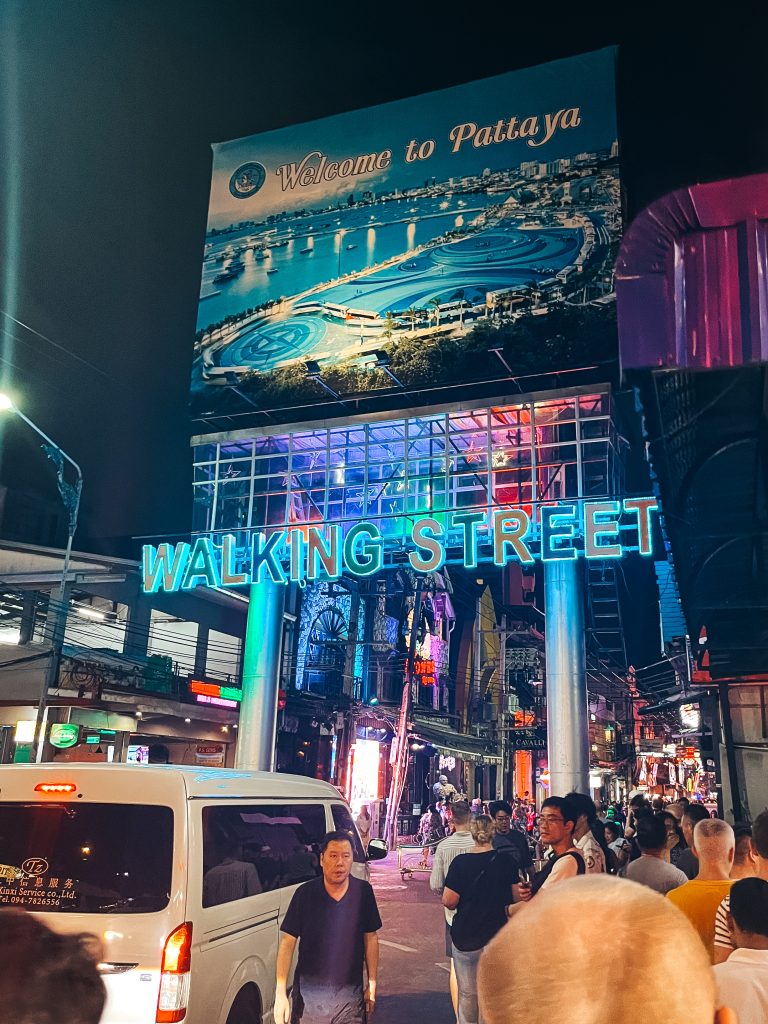
Pattaya’s Walking Street
Pattaya’s Walking Street is the city’s famous nightlife hub, packed with bars, clubs, and neon lights. It’s lively and chaotic—and here I tried eating insects for the first time, a truly unforgettable experience!
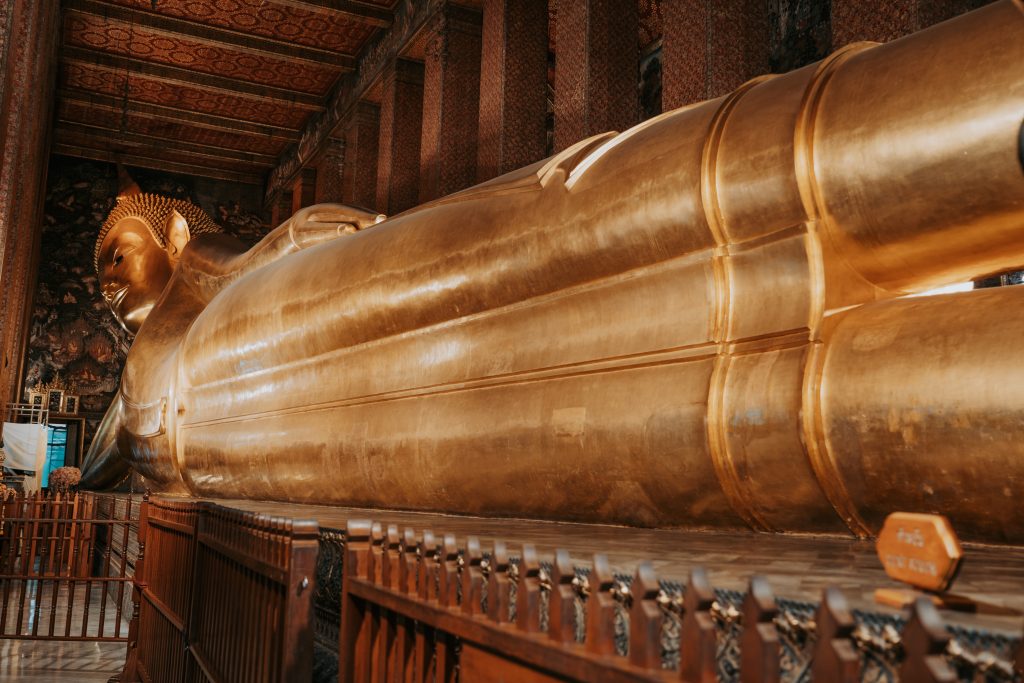
Wat Pho in Bangkok,
This is Wat Pho in Bangkok, home to the impressive Reclining Buddha. Seeing the massive statue up close is truly awe-inspiring, and the temple’s peaceful ambiance makes the visit unforgettable.
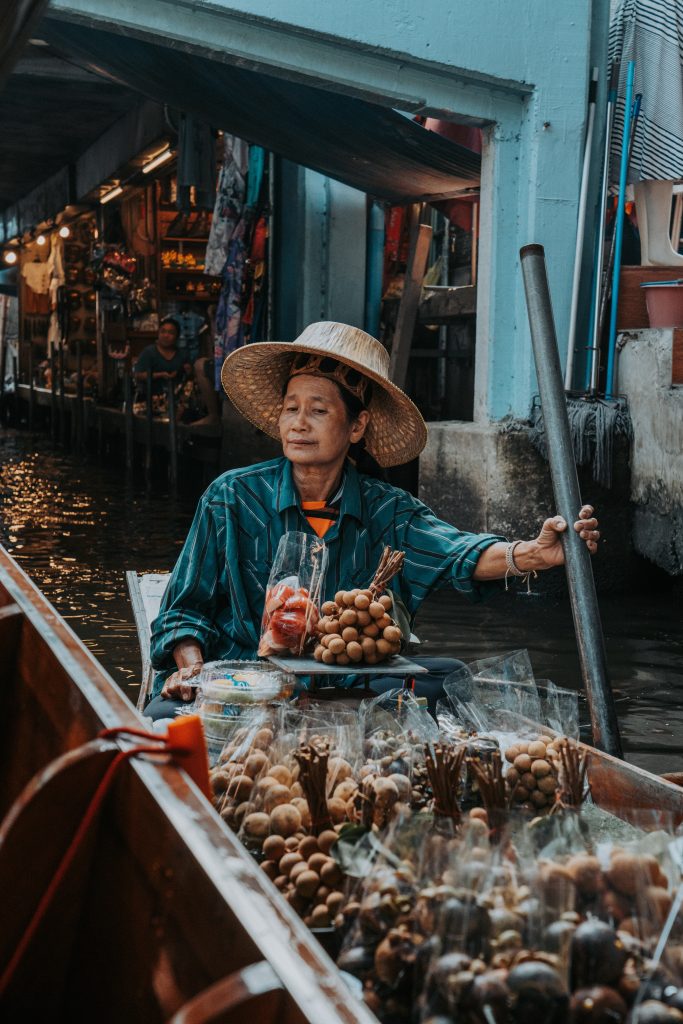
Bangkok’s Floating Market
Bangkok’s Floating Markets are a colorful experience, but note that boat rides can be quite pricey. While the market itself is vibrant and fun to explore, the cost of taking a boat through the canals is noticeably high for tourists.
Ho Chi Minh City
Here I really recommend booking an excursion. The city is super lively and overwhelming – perfect for those who want to fully experience the hustle and bustle of Vietnamese life.
Currencies: Vietnamese Dong (VND)
• 1 € ≈ 31,034 VND
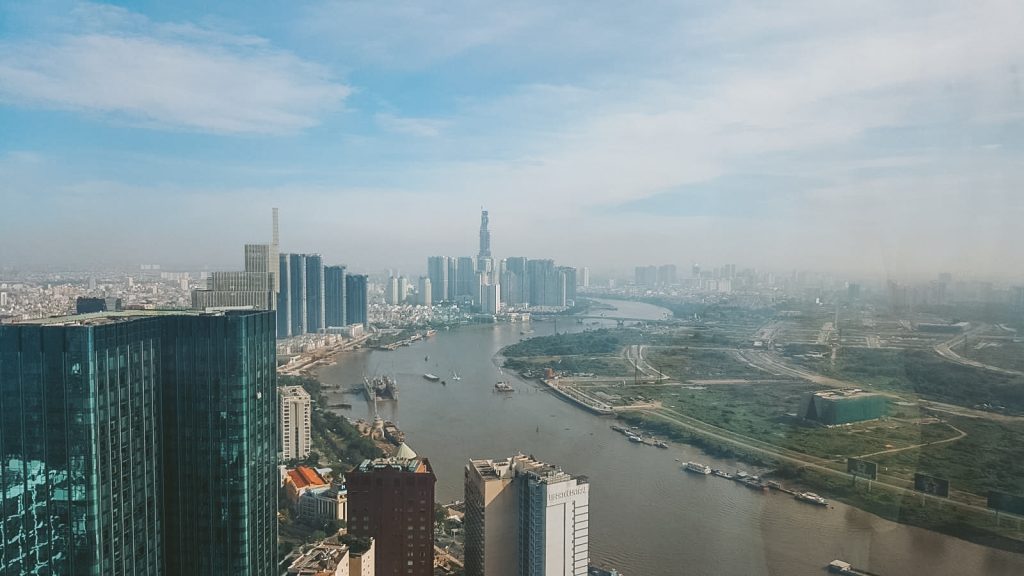
Ho Chi Minh City’s skyline
Ho Chi Minh City’s skyline is a striking mix of modern skyscrapers and historic buildings. From above, the city pulses with energy, lights, and endless activity—a true reflection of Vietnam’s dynamic spirit.”
Penang
Penang is one of my favorite ports! Just step off the ship and within 10 minutes you’re in the heart of it all.
The streets are filled with amazing street art, small temples, colorful alleys, and of course, delicious street food. Just start walking and exploring – guided tours are often less exciting compared to discovering on your own.
Currencies: Malaysian Ringgit (MYR), 1 € ≈ 4.95 MYR
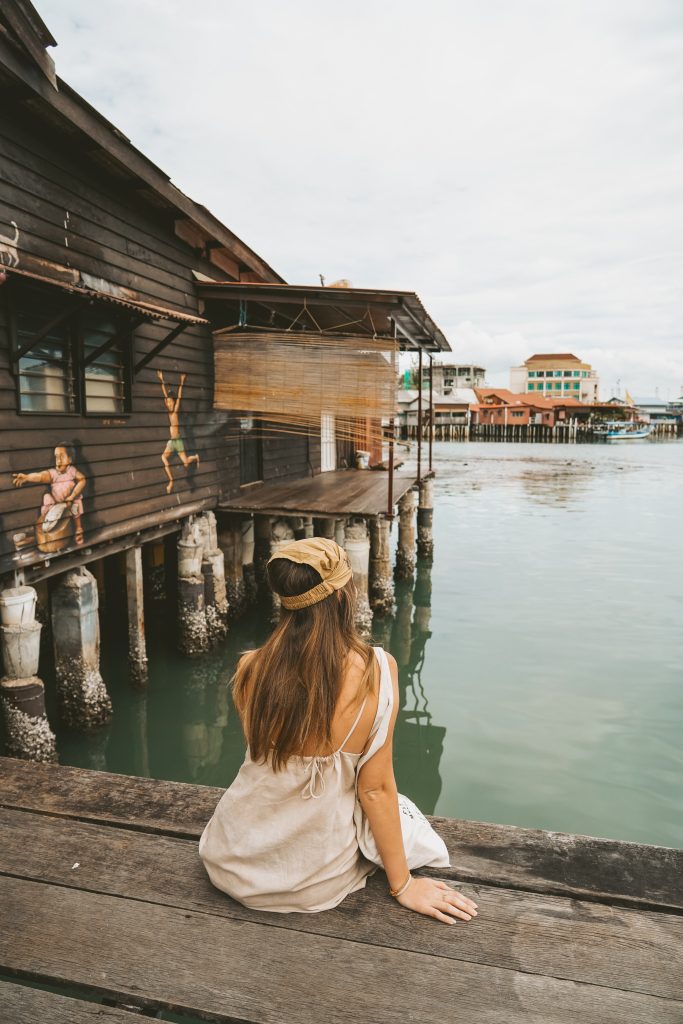
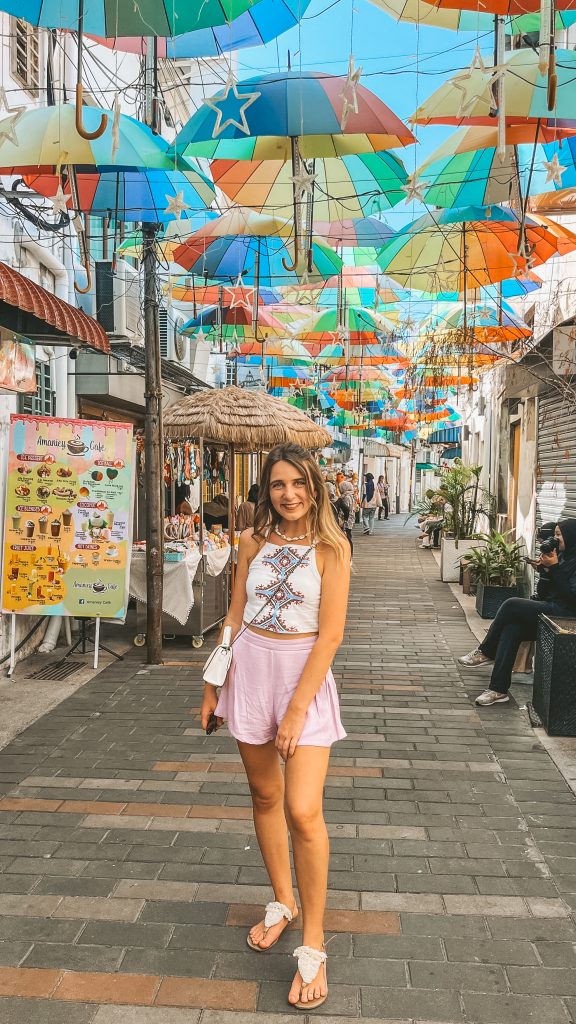
colorful streets
In Penang, there’s a street where colorful umbrellas hang overhead, turning the sky into a playful canopy. It’s a fun and photogenic spot.
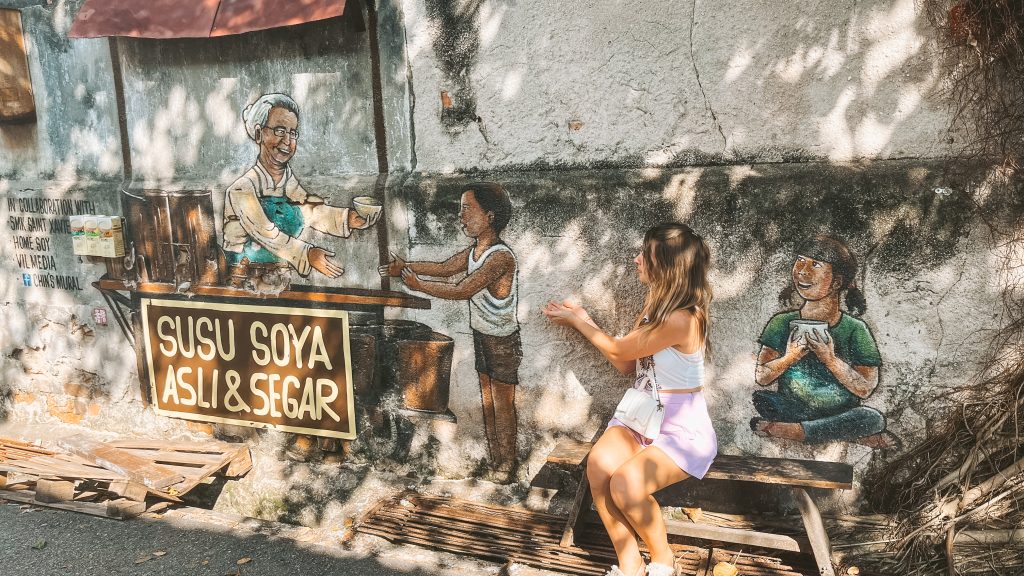
Street Art
Penang’s streets are full of vibrant street art, turning walls into open-air galleries. Each mural tells a story, adding color and character to the city’s historic streets.
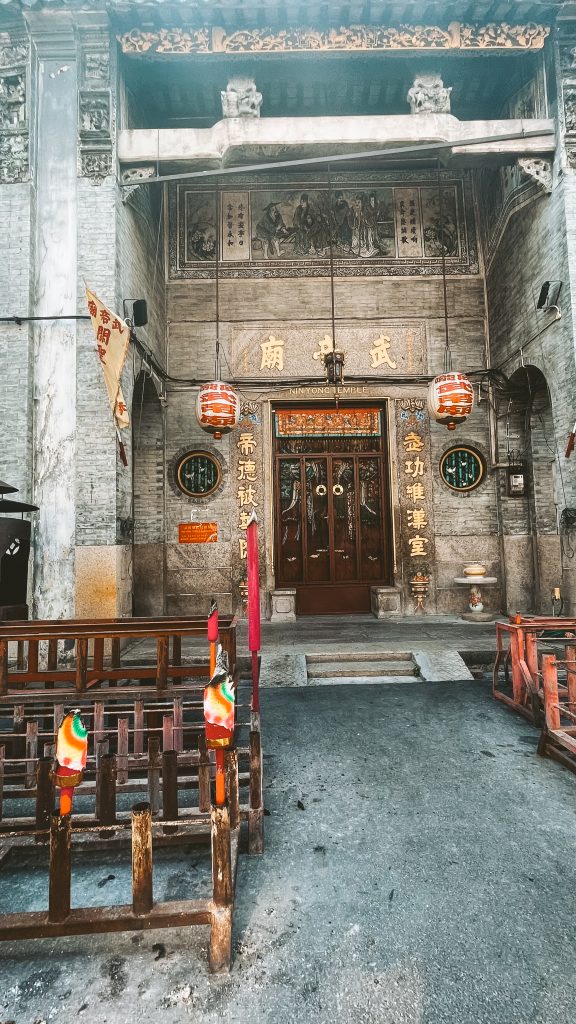
Small Temples
Penang’s streets are dotted with charming small temples, often decorated with colorful pennants. These hidden gems add a touch of spirituality and local culture to the bustling city.
General tips for this route
• Bring light, long clothes – especially important for temple visits (shoulders and knees must be covered).
• Money exchange: Almost every port along this route has its own currency. It’s best to withdraw or exchange a bit more money at once so you don’t run into problems later. You can exchange directly on board or at exchange offices in town – but in some countries they are not very common.
• Internet on the go: If you want to be online at every port, download the app Airalo. You can buy a global eSIM that covers all the countries on your route. Just remember to switch off mobile data when you don’t need it – otherwise your data runs out quickly.
